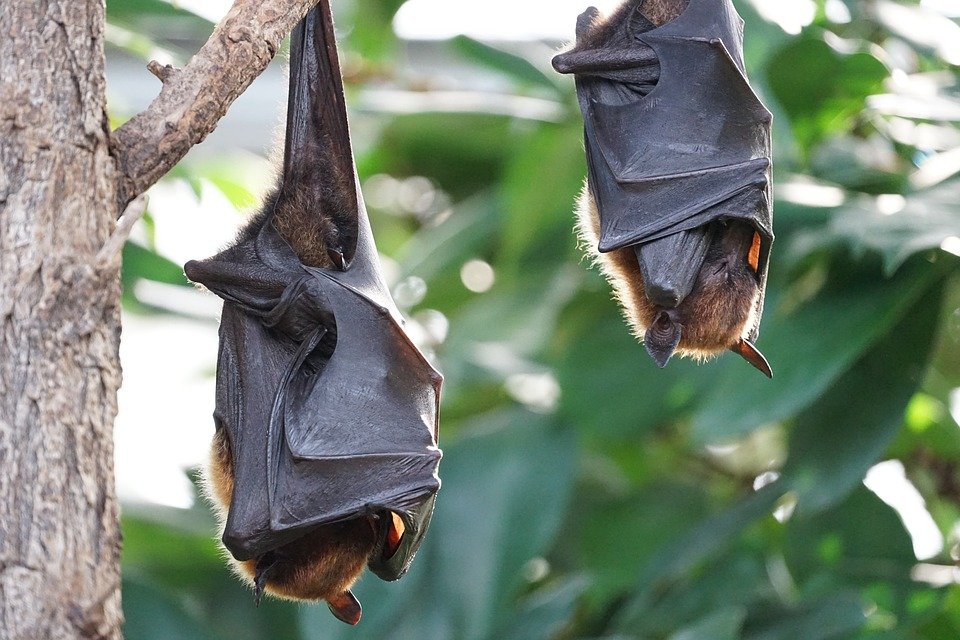Fair warning: This is not a post about ants.
I have been reading quite a few articles about bats recently, mostly because it is the last week of October, and is thus the Bat Appreciation Week. So I thought a few posts about bats and why we need to appreciate them would be appropriate for the week. The ants should not mind sharing the spotlight for a bit, because they have certainly not been abandoned.
Let us begin focusing on the bats. They are the only flying mammals, and they represent about 20% of all classified mammal species that we know about, which is a considerable proportion and that alone should be a reason to learn more about them because we can certainly expect them to have an important role in the earth's ecosystem.

I feel a little underappreciated today!
Source: pixabay
What are the bats doing this week?
Winter is approaching in the northern hemisphere. As trees shed their leaves and we acquire our winter clothing and prepare for gloomy days and skunks, bees, bears, and snakes make plans for their winter sleep, bats have a big decision to make: to hibernate or not to hibernate?
Why can’t they just drink some blood and warm themselves up?
You may have watched enough batty movies to think of bats as blind bloodsucking creatures, or as scary little flying beasts, but the real animals that fly around and sleep upside down all day in caves and abandoned houses are a bit less flamboyant. Out of about 1,240 bat species that live around the world, 3 are actually the so-called vampire bats whereas 70% of the species eat insects and the rest eat just fruits and nectar from flowers.
We shall come back to the vampires later, but the issue about hibernation is mostly a problem of the insectivores. As winter approaches, the insects themselves hibernate, or they are only found as nymphs or larvae or eggs. In other words, food for the bats is scarce and they must decide on whether to hibernate or to move to a warmer place. Some choose one and some do both.
So they sleep all winter or go to a warmer place while I am stuck in the cold and they sleep all day. Why can’t I take this week to appreciate myself instead?
Well, you should certainly appreciate yourself, no doubt about that, but bats also need our attention. In this post, let us focus on the fact that they are important pollinators.
Bats are pollinators
In the wild as well as in our agricultural fields, bats help in pollination which is the process of transfering pollen grains from the male part of a flower to the female part of a flower. Pollination can occur between the male and female parts of the same flower or different flowers of the same plant (which is called self-pollination), or it can occur between flowers of different plants (which is called cross-pollination).
Cross-pollination is better for the survival of plants because it produces genetic diversity which leads to healthier, disease-resistant progenies. This is where bats (and other flower-visiting animals) play an important role. As they visit one flower after another for food, they act as carriers of pollen grains. So the flowers get pollinated, and the animals get the food making this a mutually beneficial process.
Is this really important?
Yes.
As an illustration, allow me to introduce Dr Rodrigo A. Medellín, also known as the Bat Man of Mexico. He has been credited with being a super-hero savior of bats as well as, believe it or not, tequila.

Who took my tequila flowers?
*Source: pixabay
Tequila is made by cooking and fermenting the juice from a cactus-like plant called the blue agave or the tequila agave. When farmers found out that they could produce more juice quickly if they harvested the agave plants before they bloomed into flowers, they proceeded to do exactly that.
During this process of monocropping, the agave roots are left in the fields after harvest so that they will sprout again. The new sprouts are then replanted in the field. When replanting, the sprouts from the plants with the highest yield in the previous harvest are chosen. This results in even more yield in less and less time, but also gets rid of genetic diversity pretty quickly.
And that is what was happening in Mexico until the 1990s.
What about the bats?
Let us also meet the lesser long-nosed bat of North America that survives on the nectar from the flowers of night-blooming cactus and agave plants. So when the agave farmers in Mexico started to practice monocropping and stopped letting the agave plants bloom, the bats suffered due to lack of food, and their number fell to less than 1,000 in 1988.
But that was not the end of the story. The plants were also waiting for a disaster to happen.
In the 1990s, a fungus attacked the tequila fields and it was indeed a disaster as rows and rows of the crop got destroyed by the disease. This was recognized to be the effect of poor land management, overpopulation, and the lack of genetic diversity resulting from the monocropping.
That was a wake-up call.
Since then, Rodrigo Medellin has been working with organizations and farmers and things have been improving. On his advice, some farmers have started letting 5% of their crops grow and flower before harvesting them. Bats have started visiting the flowers again, and this article from May 2017 mentions that the number of these bats has increased to 200,000 and is about to be taken off the list of endangered animals. The agave crop is also getting more diverse, and you can now find bat-friendly tequilas in the market.
I think this story is a nice demonstration of the delicate balance present in an ecosystem, and it also shows us why bats are worthy of appreciation.
Along with the agave plants, over 500 species of plants including mango, guava, cocoa, and durian also rely on bats for pollination.
In some of my future posts, I will focus on a few other appreciable traits of bats such as their role in seed dispersion in the wild and their role in pharmaceutical research. I will also try to write a little about their ultrasonic navigation and about the evolution of flight in bats.
This page on the U.S. National Park Service website has some suggestions if you would like to end the week with some bat-related activities.
Links to references and image sources are provided in the text.
